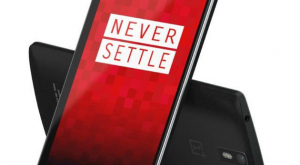Last Updated on September 20, 2024 by Mathew Diekhake
 You can swap the stock recovery environment for a custom one so you can start installing custom software and get root access if you like.
You can swap the stock recovery environment for a custom one so you can start installing custom software and get root access if you like.
If the last time you installed a custom recovery image was back in 2011, then you probably only know the name Clockworkmod Recovery in the world of custom recoveries. Since then ClockworkMod has met its demise, which was primarily due to the arrival of TWRP Recovery, although if you were to read around the Web, you might see otherwise.
Both custom recovery images offered similar features, but TWRP has a touch-based interface whereas ClockworkMod only allowed for navigation to be done by using the Volume keys. Before ClockworkMod gave up development entirely, it created a Philz Touch Recovery which was supposed to rival TWRP since it too came with a touch-based interface. But the idea didn’t really kick off, people didn’t understand what Philz Touch was all about, and the writing was on the wall for all recoveries not named TWRP.
Since then four developers have been working many a day creating TWRP custom recovery images for hundreds of different devices. They also get help from people around the web who answer questions on forums such as the likes of XDA-Developers. There’s even an official TWRP app out now from the Google Play Store that, when available for a device, can make it possible to install the custom recovery without using ADB commands; all you need is root access instead, and then you just install it like any other root application.
Details of Note
- The custom recovery images available in this guide are only to be installed on the OnePlus One smartphone. Most devices have a custom recovery image developed specifically for it, and you shouldn’t install one that is intended for another device unless advised it is okay by a professional.
- The codename for the OnePlus One TWRP recovery image is “bacon.” You will see that codename in the TWRP image file path and also from your About Device menu so you know you are flashing the right file on the right device.
Files Required
- Download on your computer the latest version of TWRP Recovery: Primary (Americas) | Primary (Europe).
- Download on your computer the platform-tools from the Android SDK.
How to Install TWRP Recovery on OnePlus One
1. Install the universal ADB drivers on the computer.
2. You need to have the platform-tools part of the Android SDK on your computer. From the download link, scroll down until you get to the command line tools section and then download the package that is made for your operating system.
3. Once you have the SDK Manager on your computer, check the box only for the platform-tools, so you end up with the adb and fastboot binaries installed on the computer.
You could also install the drivers from there as well if you wanted.
4. Pick up the OnePlus One smartphone and navigate to the Settings > About and tap your finger over the build number at least seven times so that the Developer Optionsmenu becomes unlocked. Then go back to the Settings, enter the Developer Optionsmenu and then enable the USB debugging mode.
5. Connect the OnePlus One smartphone to the computer by using the USB cable that it comes with.
6. Now on the computer open the Command Prompt and type the following command and hit Enter on your keyboard to get the OnePlus One smartphone into the bootloader mode and ready for the flashing:
adb reboot bootloader
7. Make sure you have copied the TWRP image file to the same folder as the adb and fastboot binaries. Also when you’re there, change the name of the TWRP to “twrp.img” by right-clicking the mouse pointer on it and selecting the Rename option from the menu.
8. From the command line type the following command and hit Enter on your keyboard to flash the custom recovery:
fastboot flash recovery twrp.img
9. Lastly type the following command and as soon as the OnePlus One smartphone reboots, hold down the key combination to boot directly into the recovery mode.
If you don’t sometimes the stock recovery will wipe over the custom recovery you just installed.
fastboot reboot
The custom recovery image for the OnePlus One smartphone is now installed, and you are ready to boot into recovery mode and start flashing the custom ROM or rooting zip files.
That’s all.
